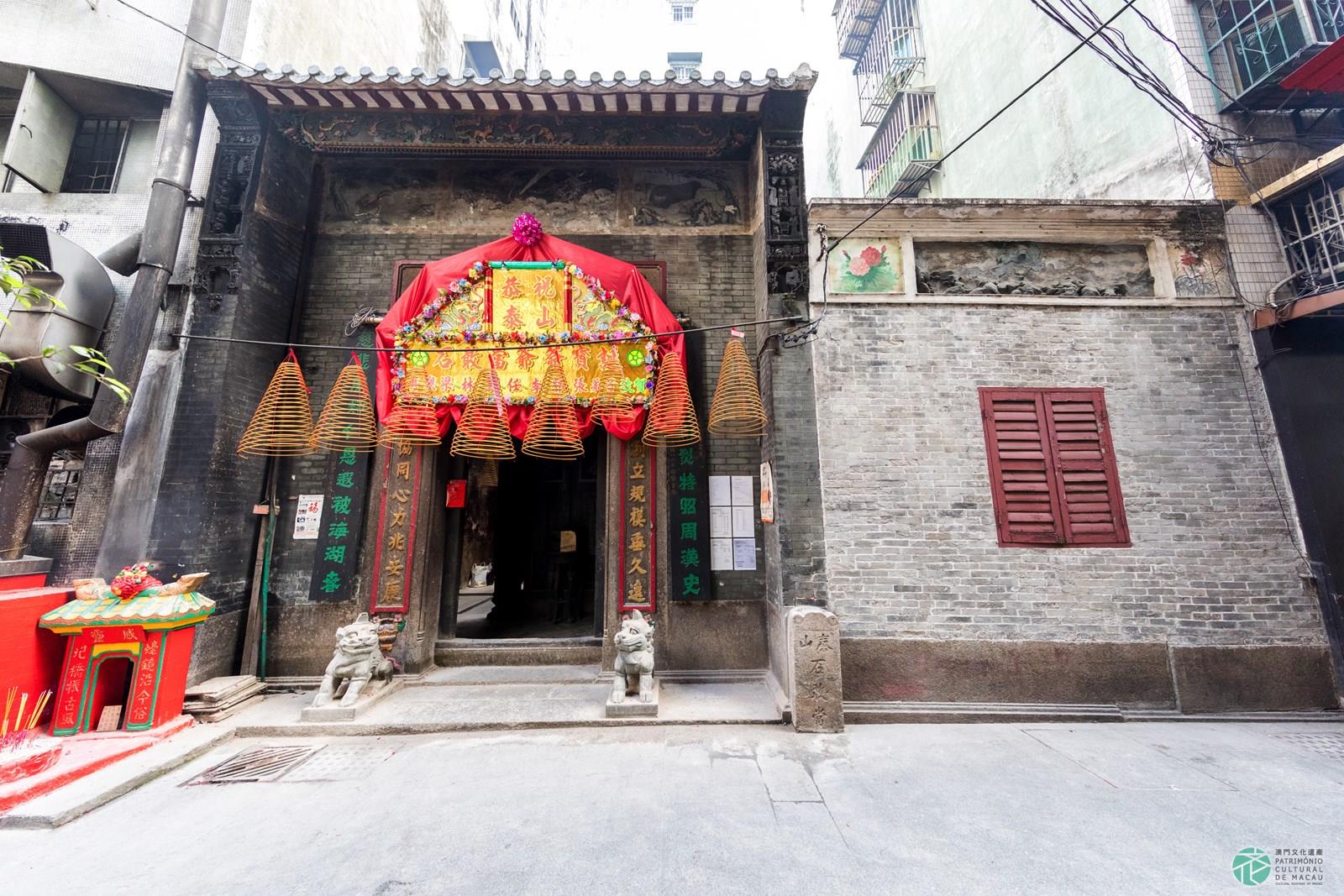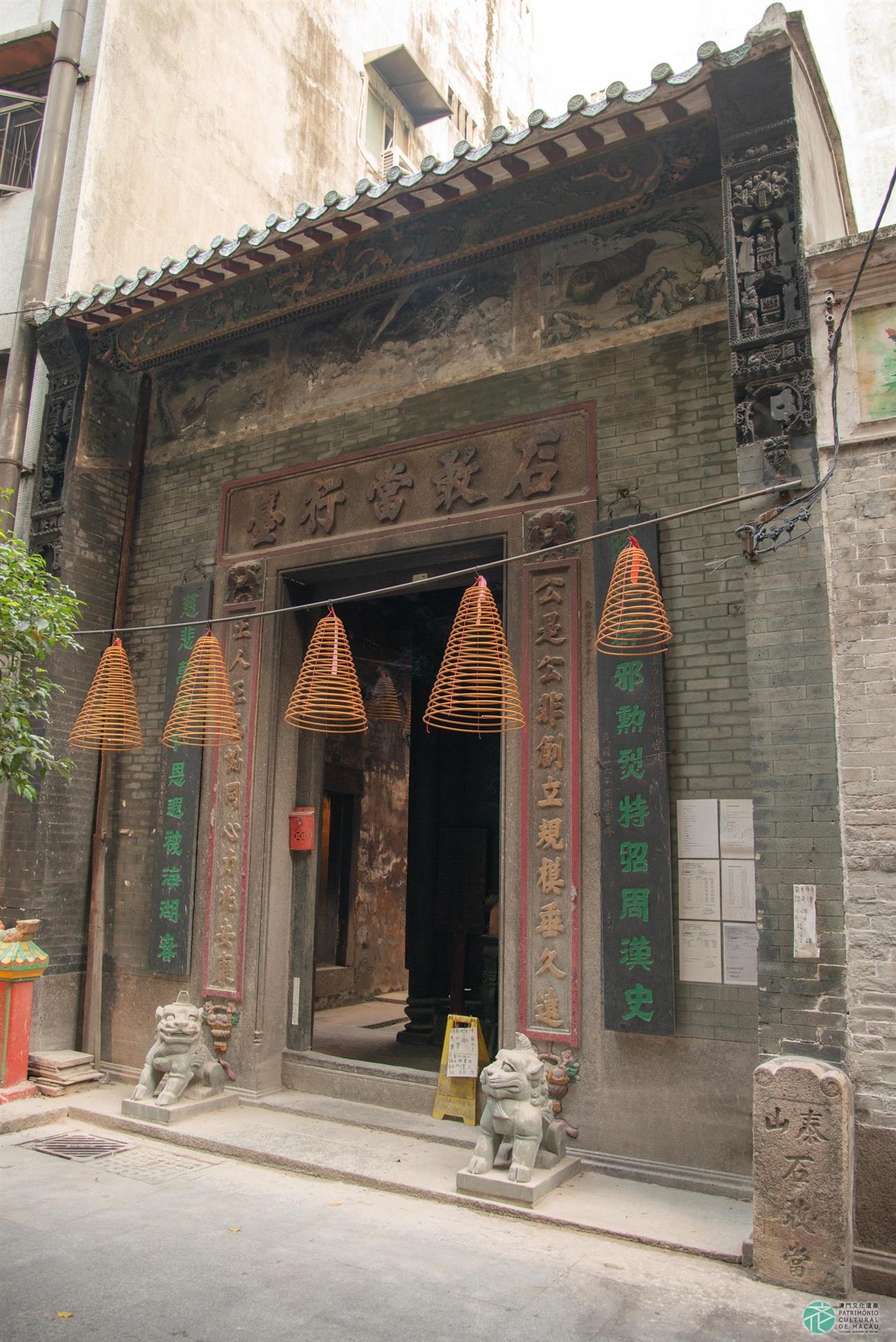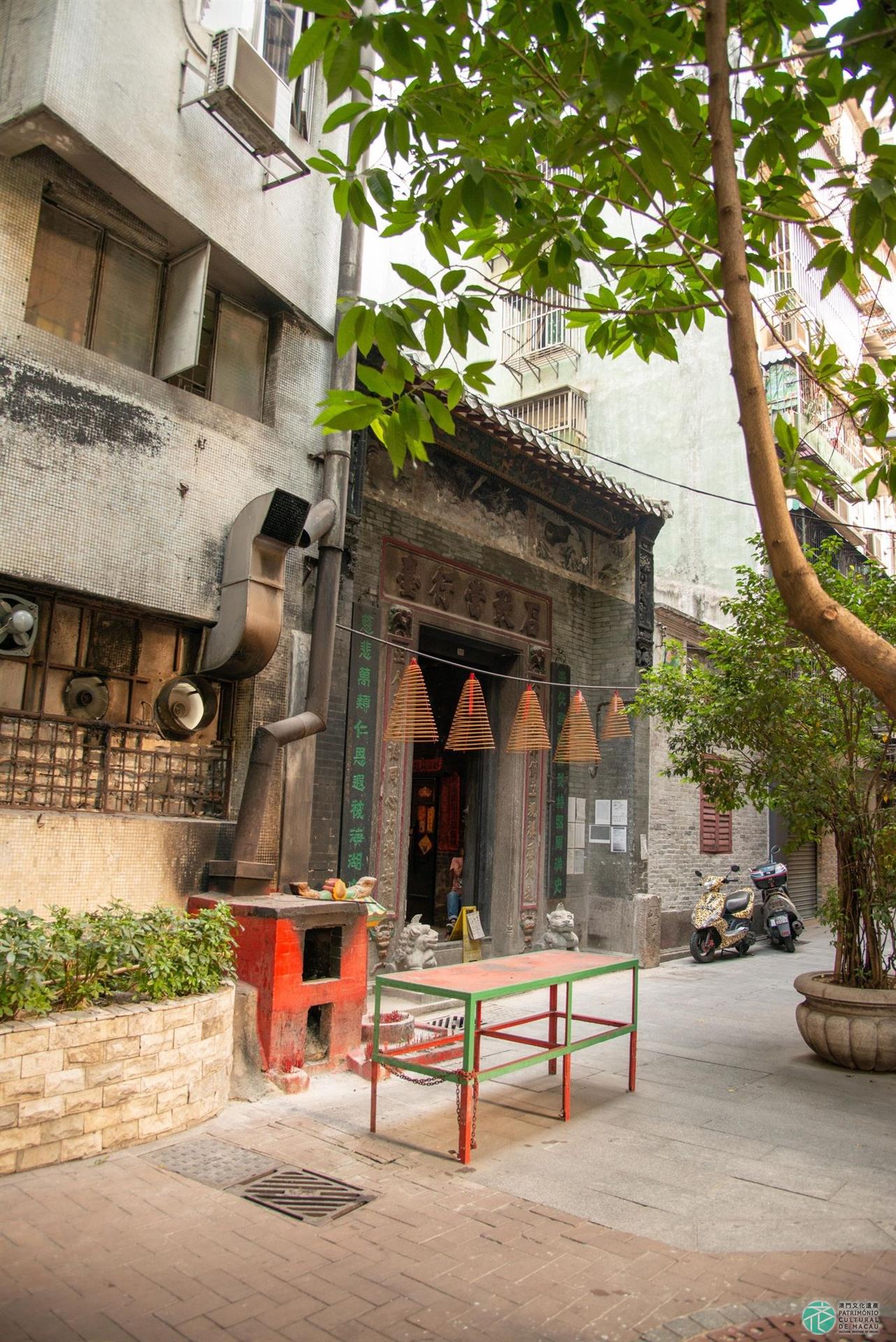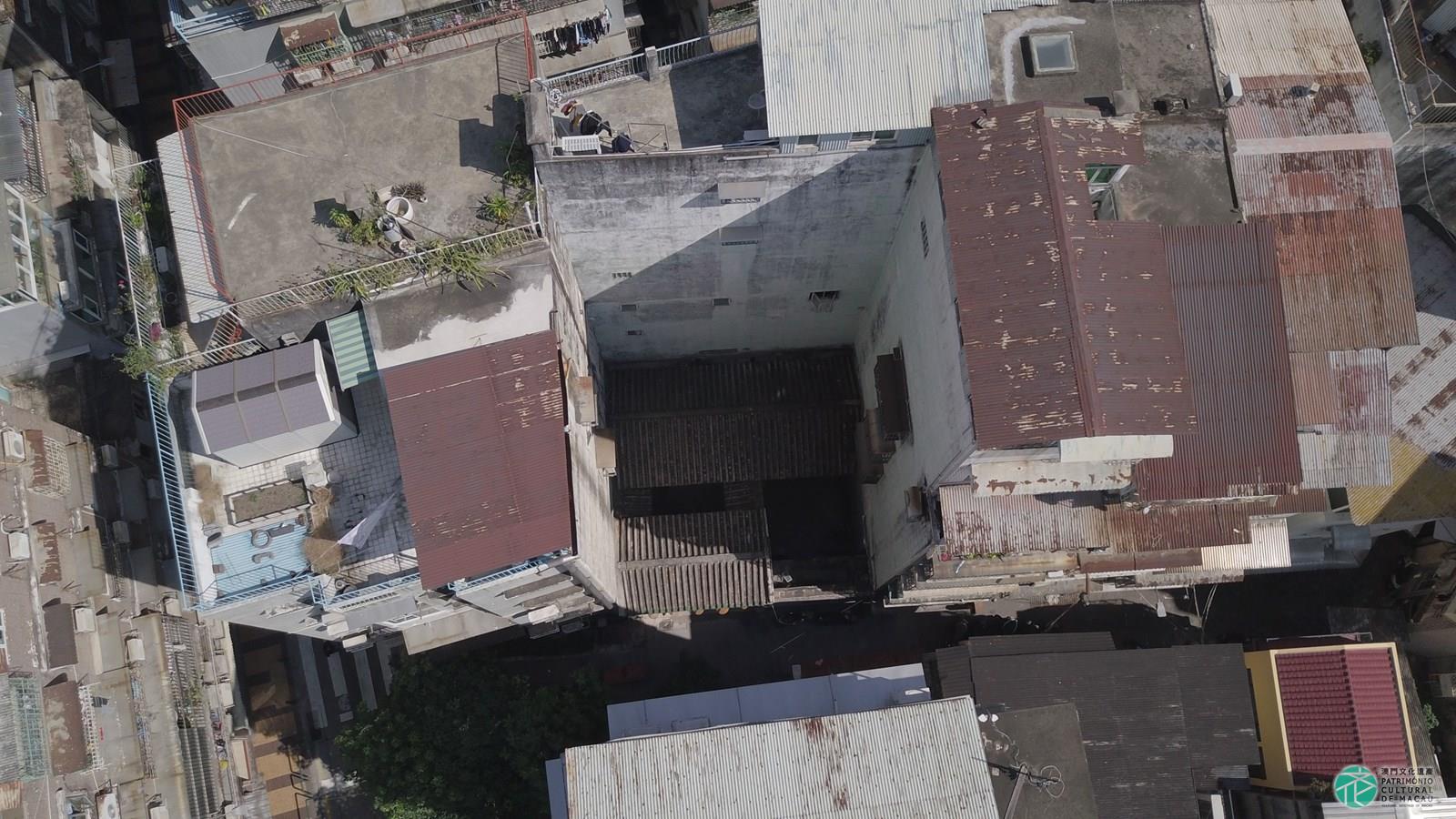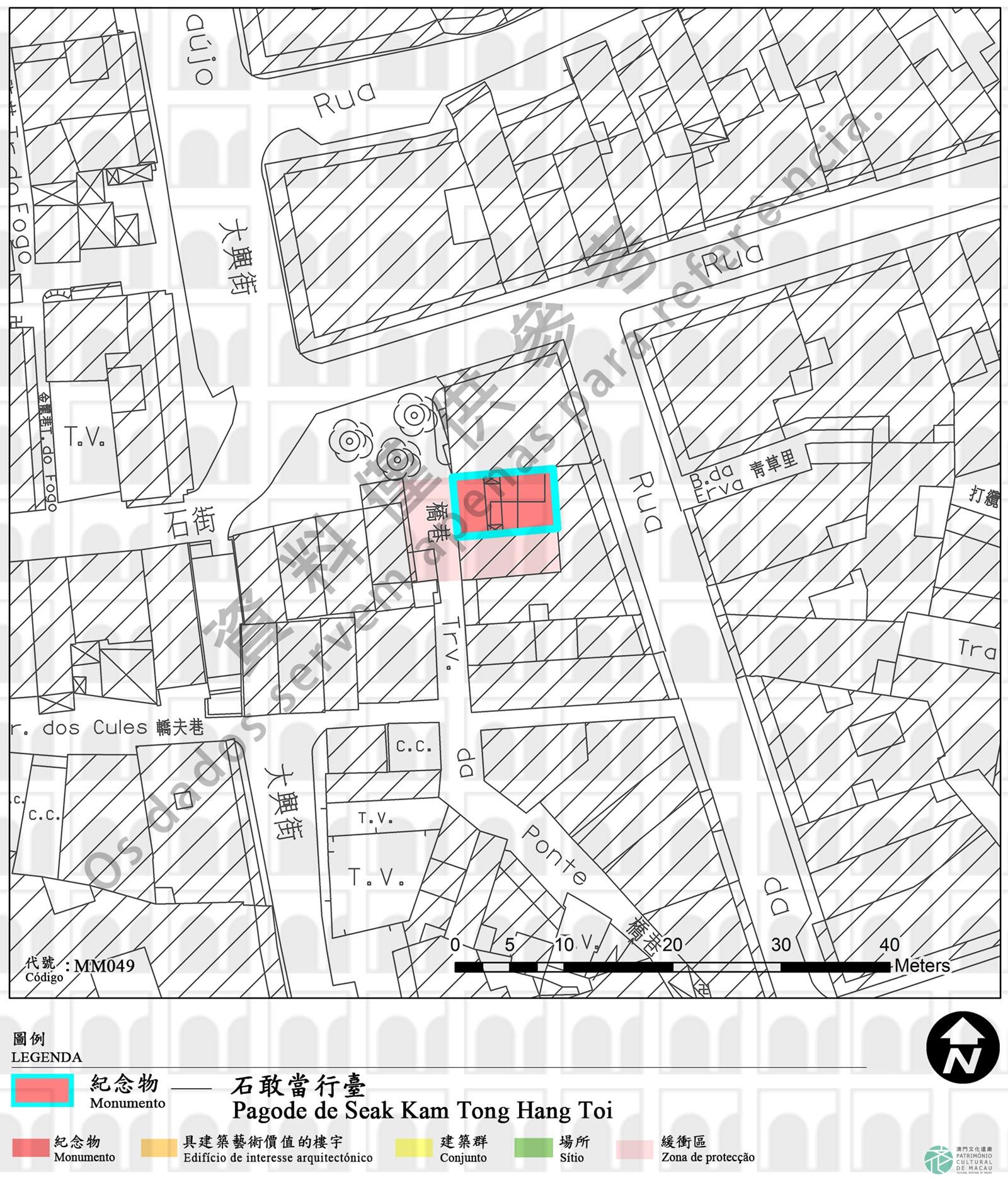Seak Kam Tong refers to stone tablets or stones installed at three-way junctions on bridges and roads or at the entrance of residences to ward off evil spirits, safeguard the households and protect people’s safety. In the coastal areas of China where fishing is the major industry, Seak Kam Tong is believed to be able to subdue the weather and prevent disasters in addition to dispelling ominous forces and protecting the households. In Macao, which is located on the southeast coast of China, the beliefs and customs of Seak Kam Tong were widely upheld, and Seak Kam Tong stone tablets were erected by local residents at prominent spots in streets and alleys and on roads and bridges for the aforementioned purposes.
In the olden days, a shrine dedicated to Seak Kam Tong was built next to the former Lin Kai (Lotus Stream) and San Kio bridge. The Seak Kam Tong Hang Toi Temple was not only dedicated to enshrining Seak Kam Tong, who is believed to be able to protect the public from evil spirits and ominous forces, but also served as the communal hall where residents of the San Kio neighbourhood assembled and convened meetings. According to the Inscription on the Establishment of Seak Kam Tong Communal Hall inside the temple, the temple was proposed to be built by ‘residents of the San Kio neighbourhood in Macao, Xiangshan County’ in 1885, the 11th year of Emperor Guangxu’s reign in the Qing dynasty, and was built in 1894, the 20th year of the same emperor’s reign, after years of fundraising efforts. It is inferred from the ‘Earth God at the Head of Bridge’ shrine opposite to the left of the temple’s entrance door that the temple was constructed adjacent to ‘San Kio’, and it is also written in the said inscription that ‘this place leads to Lin Kai and faces the sea’, suggesting that the stream was likely to have passed in front of the temple, which was situated at the head of the bridge. That is to say, the location of the temple shares the same characteristics as those where the Seak Kam Tong stone tablets are normally erected. Having a history spanning almost 120 years, the Seak Kam Tong Hang Toi Temple is a rarity in China for its worship of Seak Kam Tong as the main deity, serving as a testimony of the continuation of Chinese traditional folk beliefs and customs in Macao.
The Seak Kam Tong Hang Toi Temple is a small temple located in the west of the Macao Peninsula and in the Parish of Santo António. At present, only the front door and the main hall of the temple are preserved and are connected with a corridor, and in the middle is a small atrium. The temple is mainly made of brick and wood. The walls are mostly built from polished grey brick laid with the running method, and the floors paved with large vermillion clay tiles and grey granite blocks. The wooden soffits and the walls underneath are adorned with various auspicious floral and mythical beast motifs, and the gable corbels at the entrance are covered with ornamental woodcarvings. On both sides of the door is a pair of stone lions. Various auspicious motifs, such as bats and coins, are carved fully on the screen door and on the translucent panels and fascia boards installed at the beams and purlins on the side corridors. The Seak Kam Tong Hong Toi Temple enshrines the Seak Kam Tong statue of the historical figure Jiang Ziya inside the main hall with the goddess Kun Iam and the Tai Sui deities erected on both sides. A number of other Taoist and Buddhist deities are also worshipped in the temple, including the Monkey King, Ziwei Emperor, Great Marshal Zhao Gongming, Choi Bak (God of Wealth), and Kuan Tai (General Guan Yu). The Seak Kam Tong Hang Toi Temple embodies the features of traditional Taoist temples in the Lingnan region in terms of the line-up of deities, architectural layout, structure and decorative techniques.
